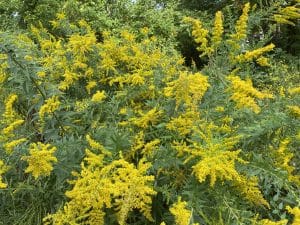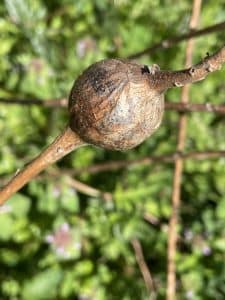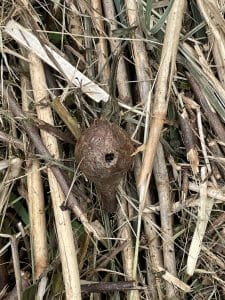As spring unfolds in the Piedmont, I’m keeping a sharp eye out for any change in the weather, budding leaves, and wildflowers on the forest floor. This year, with the spate of cold spells alternating with warm days, you would think the understory and trees would be confused. “Do we send out shoots and flowers now, or do we wait until we’re sure we won’t be frozen?” Each plant has its own schedule. It “knows” when to unfold buds and unveil flowers. And sometimes the trees and plants get frozen and don’t produce the amount of flowers or seeds needed. But the Lord has a way of rebalancing everything the next year. We know He has the number of seeds in mind for every tree. We know this because he specifically talks about seeds in Genesis. The same is true for every plant. So if one year isn’t as good as the other, He works it out over time. He keeps track of these things. Don’t think he’s not sovereign over the weather. He is.

One of the writers I enjoy is Chris Helzer, a naturalist who shares primarily about the American prairie’s plants, animals, and insects. I recently found his account of the life of the goldenrod gall fly. You may or may not have noticed, but after the goldenrod blooms, galls appear on the stems. They are more obvious this time of year. These galls result from the goldenrod gall fly laying eggs on the stem. The eggs hatch and a larva burrows inside the stem while eating the plant as food. This irritates the plant, so it produces a gall around the larvae. Perfect shelter for the winter months.
Here’s how Chris describes the process.
“It’s a nice story, but that version is way oversimplified. As is almost always true in nature, the more you look into a story, the more complex and fascinating it becomes. For example, that fly larva is not necessarily safe inside that gall.”(1)

Unfortunately, there are others who want this shelter as well. Enter two different species of wasp who also lay eggs and produce larvae. This is sometimes the end of the goldenrod gall fly larva. But what amazes me the most about this story — I know it’s kind of creepy — is to think about how the Lord designed all this. First, the fly had to recognize the goldenrod as her place to lay eggs. Then the larva had to be smart enough to eat and burrow into the plant stalk and wait it out until the plant built a gall around it for the winter. If unexpected guests don’t arrive, the fly gets to come out in the spring and have a life. Unless, of course, a third predator short-circuits this. Enter the hungry chickadee or woodpecker. These two birds love to poke a hole in the gall and eat the larvae. Yum. So not only does the fly have to survive other predator larvae but also birds. Is it not amazing that any flies survive at all? But they do. Every year.

Is this random? Never. The Lord created this entire cycle just for the goldenrod gall fly. The wasps are just mean actors who try to stop the fly from its life cycle. And sometimes it works. But enough of the time, the fly’s offspring win and get to live another day.
Anyone who thinks this is random doesn’t understand the forethought, creativity, and patience the Lord has built into our world. I don’t know what kind of battle is fought inside that gall, but it is not unlike the battles we fight to keep the integrity of our homes and lives. The enemy is always trying to destroy our homes, especially from within. He is intent on short circuiting our lives. But the Lord’s sovereign plan supersedes the enemy.
God always wins. Remember that the next time you face a brutal battle. You can be on the winning side.
“You intended to harm me, but God intended it for good to accomplish what is now being done, the saving of many lives.”
Genesis 50:20 NIV
- Chris Helzer, “What’s Really Going On Inside Those Galls?? (It’s Not Just Fly Larvae),” The Prairie Ecologist, March 8, 29023
